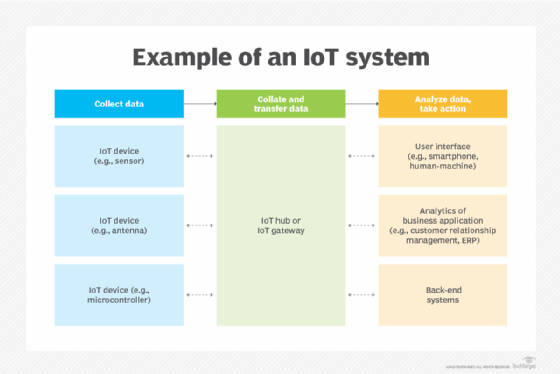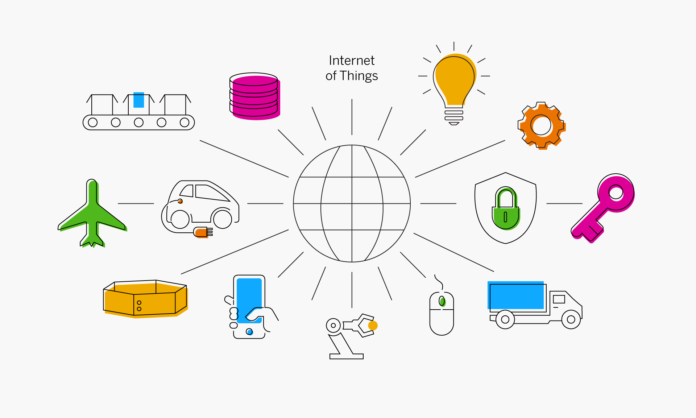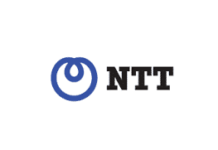The Internet of Things, or IoT, refers to the billions of physical devices around the world that are now connected to the internet all collecting and sharing data.
Thanks to the arrival of super-cheap computer chips and the ubiquity of wireless networks, it’s possible to turn anything into a part of the IoT. Connecting up all these different objects and adding sensors to them adds a level of digital intelligence to devices that would be otherwise dumb, enabling them to communicate real-time data without involving a human being. The Internet of Things is making the fabric of the world around us more smarter and more responsive, merging the digital and physical universes.
Increasingly, organizations in a better understand customers to deliver enhanced customer service, improve decision-making and increase the value of the business.
How IoT works
An IoT ecosystem consists of web-enabled smart devices that use embedded systems, such as processors, sensors and communication hardware, to collect, send and act on data they acquire from their environments. Sometimes, these devices communicate with other related devices and act on the information they get from one another. The devices do most of the work without human intervention, although people can interact with the devices — for instance, to set them up, give them instructions or access the data.
The connectivity, networking and communication protocols used with these web-enabled devices largely depend on the specific IoT applications deployed.
IoT can also make use of artificial intelligence (AI) and machine learning to aid in making data collecting processes easier and more dynamic.

Why IoT is important
The internet of things helps people live and work smarter, as well as gain complete control over their lives. In addition to offering smart devices to automate homes, IoT is essential to business. IoT enables companies to automate processes and reduce labor costs.
IoT benefits to organizations
The internet of things offers several benefits to organizations. Some benefits are industry-specific, and some are applicable across multiple industries. Some of the common benefits of IoT enable businesses to:
- monitor their overall business processes;
- improve the customer experience (CX);
- save time and money;
- enhance employee productivity;
- integrate and adapt business models;
- make better business decisions; and
- generate more revenue.
- Generally, IoT is most abundant in manufacturing, transportation and utility organizations, making use of sensors and other IoT devices; however, it has also found use cases for organizations within the agriculture, infrastructure and home automation industries.
IoT can benefit farmers in agriculture by making their job easier.
The ability to monitor operations surrounding infrastructure is also a factor that IoT can help with. This brings benefits with it, such as cost saving, saved time, quality-of-life workflow changes and paperless workflow.
A home automation business can utilize IoT to monitor and manipulate mechanical and electrical systems in a building.
IoT standards and frameworks
There are several emerging IoT standards, including the following:
- ZigBee is a low-power, low-data rate wireless network used mainly in industrial settings. ZigBee is based on the Institute of Electrical and Electronics Engineers (IEEE) 802.15.4 standard.
- Lite OS is a Unix-like operating system (OS) for wireless sensor networks. Lite OS supports smartphones, intelligent manufacturing applications, smart homes and the internet of vehicles (IoT). The OS also serves as a smart device development platform.
- AMQP enables encrypted and interoperable messaging between organizations and applications.
IoT frameworks include the following
- amazon web services is a cloud computing platform for IoT released by Amazon.
- Google’s Brolo/Weave is a platform for the rapid implementation of IoT applications.
- Calvin includes a development framework for application developers, as well as a runtime environment for handling the running application.
IoT security and privacy issues
Hackers aren’t the only threat to the internet of things privacy is another major concern for IoT users. For instance, companies that make and distribute consumer IoT devices could use those devices to obtain and sell users’ personal data.
- Public Perception: If the IoT is ever going to truly take off, this needs to be the first problem that manufacturers address. The 2015 I control State of the Smart Home study found that 44% of all Americans were “very concerned” about the possibility of their information getting stolen from their smart home, and 27% were “somewhat concerned.” With that level of worry, consumers would hesitate to purchase connected devices.
- Vulnerability to Hacking: Researchers have been able to hack into real, on-the-market devices with enough time and energy, which means hackers would likely be able to replicate their efforts.
- Are Companies Ready?: Yet a mere 10% of those surveyed feel confident that they could secure those devices against hackers.
- True Security: Companies also need to build security into software applications and network connections that link to those devices.
- Too Much Data: The sheer amount of data that IoT devices can generate is staggering. This creates more entry points for hackers and leaves sensitive information vulnerable. The same could occur for health or life insurance thanks to fitness trackers.
- Eavesdropping: Manufacturers or hackers could actually use a connected device to virtually invade a person’s home..





